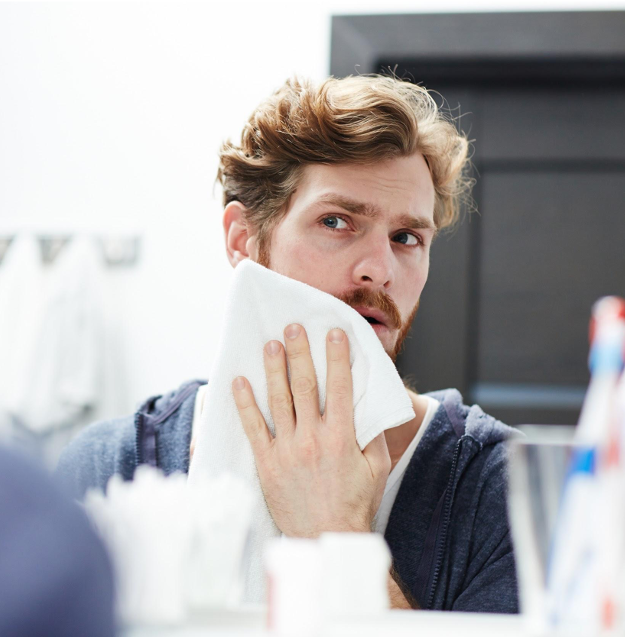Tips for Wearing a Face Mask in Summer

As temperatures rise into the mid-90s, it's time to welcome the long, hot Houston summer. And, as taking safety precautions in public will likely remain the norm for the foreseeable future, learning how to comfortably wear a mask when out and about is a must. Here are some tips to follow so that loading up groceries in the parking lot doesn’t have to be a dreaded challenge.
Finding the Right Material and Fit
The best fabric recommended by the Centers for Disease Control and Prevention is pure 100 percent cotton. Not only is it super accessible (found in a majority of t-shirts, bandanas, and fabric stores), but it's also one of the coolest, breathable fabrics that also contains fibers small enough to stop the spread of virus particles. If you’re making a cotton mask at home, use multiple layers of fabric to maximize effectiveness while also making it cool enough for the Texas heat.
If your mask doesn’t really fit or is uncomfortable, then sweating and humidity will only exacerbate the problem. Kirsten Gonzalez, a medical intensive care unit nurse at UTMB Health, advises you to not settle for an ill-fitting mask. If elastic masks that go behind your ears are causing discomfort, try straps made with an alternative material, like hair elastics or cloth. If masks that wrap around the head give you a headache, find one that manually ties or allows for adjustments.
For more information on making your face mask at home, check these tips.
Proper Mask Care
How you take care of your mask determines its effectiveness. Cloth masks should be washed after every use, and if you’re frequently outside, you may want to invest in more than one. “For cloth masks, after they get soiled—wet with sweat or anything from your hands—they should be changed as soon as possible,” Gonzalez says. If you’re around others for a long time, having another mask on hand could be a saving grace if the heat starts beating down.
If you have to take your mask off for some reason, avoid touching the mask in the process. Gonzalez recommends removing the mask by the straps at the ears, placing the mask on a paper towel face down, and placing another paper towel on top of it to ensure it remains sanitary during the break.

Combating Skin Irritation and Acne
When sweating and wearing more sunscreen in the summer, the chances of masks causing skin irritation will increase. Luckily, local dermatologist Dr. Reena Jogi assures us that preventing and treating this is definitely possible.
To avoid skin irritation in the heat, Jogi suggests wearing breathable cloth masks and investing in a sun protection neck gaiter to protect against UV exposure. Trying to avoid spending long amounts of time outside in the middle of the day can also protect from potentially harmful heat and humidity.
If skin irritation does occur, “the best approach is to try a mild emollient [moisturizer] such as Aquaphor or Vaseline a few times per day,” Dr. Jogi recommends. These products are hypoallergenic and gently heal skin. For what Jogi calls “maskne”—acne caused by mask use—or other COVID-related breakouts, try these different products to treat stressed-out skin.
Listen to Your Body
Lastly, but most importantly, do what’s best for you. If you feel you need to take a break every 15 minutes, do it. Don’t exert yourself if you don’t need to. If wearing a mask in the heat makes it hard to breath because of preexisting conditions, limit mask use by staying home or staying away from others when outdoors. Stay hydrated, especially when the masks will likely lead to higher body temperatures and sweating. Listen to your body, be smart while practicing safety precautions, and this summer will be very cool and comfortable ... relatively speaking.




